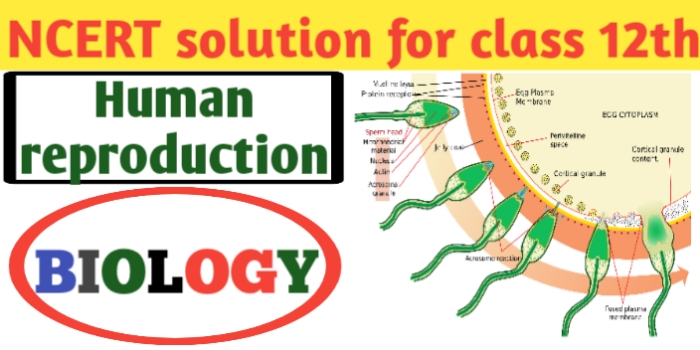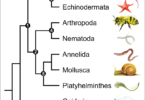ncert solutions for class 12th biology chapter 3- CBSE-JAC exams
■ topics:- human reproduction and their ncert solutions for class 12th biology chapter 3- CBSE-JAC exams
■ subtopics:- human reproduction spermatogenesis and oogenesis and ncert solutions for class 12th biology chapter 3- CBSE-JAC exams
* introduction :- ncert solutions for class 12th biology chapter 3- CBSE-JAC exams and students might be busy in your preparation for coming 12th board Jharkhand academic Council exams.biologysir.com will provide many type of education material like fill in the blanks, true or false matching type questions ,multiple choice questions, very short questions answers type, short questions answer type and long questions type of 12th class Biology from each topic that help you in your preparation.and Matching question examples in biology for class 12th CBSE-JAC Exams
*In this post :- ncert solutions for class 12th biology chapter 3- CBSE-JAC exams and we provide you matching type questions with answer from the lesson 3 human reproduction
ncert solutions for class 12th biology chapter 3- CBSE-JAC exams
(Q1) fill in the blanks :-
a) human reproduce _______________ ( asexually/sexually)
Ans. b
b) humans are ______________( oviparous/viviparous/ovoviviparous)
Ans. b
c) fertilization is _______________in humans( external/internal)
Ans. b
d) male and female gametes are __________( diploid/haploid)
Ans. b
e) zygote is ___________( diploid/haploid)
Ans. a
f) the process of release of ovum from mature follicles is called_____________
Ans. Ovulation
g) ovulation is induced by a hormone called_____________
Ans. LH
h) The fusion of male and female gametes is called______________
Ans. Fertilization
i) fertilization takes place in _____________
Ans. Fallopian tube
j) zygote divides to form ___________which is implanted in uterus
Ans. Blastocyst
K) the structure which provide vascular connection between foetus and uterus is called_____________
Ans. Placenta

ncert solutions for class12 biology chapter 3- CBSE-JAC exams
(Q2) write two major functions of each of testis and ovary
Ans. A) function of testis:-
a) in testis there is a formation of haploid gametes sperms by the process of spermatogenesis
b) in testis leydig cells produce male sex hormone testosterone
B) function of ovary:-
a) in ovary haploid gametes ova is formed by the process of oogenesis
b) in ovary there is a secretion of female sex hormone like estrogens progesterone and relaxin which help in reproduction
(Q3) describe about a structure of seminiferous tubules
Ans. 1) seminiferous tubules of testis is lined by germinal epithelium having two types of cells :-germ cells and sertoli cells
2) germ cells which is known as spermatogonia formed haploid male gametes sperm by the process of spermatogenesis and intermediate stage is Primary spermatocytes secondary spermatocytes and spermatids.
3) sertoli cells:- it is pyramidal shape and provide nutrition to developing sperm
(Q4) what is spermatogenesis?
Ans. In testis spermatogenesis is process of formation of haploid motile microscopic male gamets that is called a spermatozoa from the diploid spermatogonia of the testis of male organism
(Q5) name the hormones involved in regulation of spermatogenesis
Ans. There is a following hormones which helps in spermatogenesis process
1) GnRH:- is secreted by hypothalamus its stimulate adenohypophysis of pituitary to Secrets gonadotropins hormone
2) FSH:- it is secreted by adenohypophysis of pituitary that stimulate sertoli cells to Secrets certain factor which help in spermatogenesis
3) ICSH- it is secreted by adenohypophysis of pituitary that stimulate interstitial cells to secret testosterone hormone it is stimulate spermatogenesis process.
4) testosterone:- it is produced from Leydig cells that control the development of secondary sexual characters in males
■ subtopics:- human reproduction spermatogenesis and oogenesis and ncert solutions for class 12th biology chapter 3- CBSE-JAC exams
(Q6) define spermiogenesis and spermiation
Ans. 1) spermiogenesis:- it is the process of transformation of non motile and rounded spermatids into motile flagellated spermatozoan that is sperm
2) spermiation:- it is the process of release of mature haploid sperm from sertoli cells in the lumen of seminiferous tubules
(Q7) what are major components of seminal Plasma
Ans. Seminal plasma is secreted by accessory sex gland seminal vesicle prostate glands and cowpers glands, it is rich in fructose calcium bicarbonate and certain enzyme
(Q8) what is oogenesis?
Ans. Oogenesis is process of formation of haploid female gametes that is called ova from the diploid oogonia of ovary of female organism
(Q9) what are the major functions of male accessory ducts and glands
Ans. 1) male accessory ducts are following:-
a) rete testis:- It act as a storage of sperms produced by seminiferous tubules
b) Vasa efferentia:- it conduct the sperms from rete testes to epididymis
c) epididymis:- it function is a storage nutrition and physiological maturation of sperm
d) Vasa defferentia:- it conduct the sperm from epididymis to urethra
2) male accessory glands are flowing:-
a) seminal vesicles:- activate the sperm and stimulate vaginal contraction
b) prostate glands:- it active the sperm nutrition to a sperm and neutralize the acidity of urine in vagina
C) Cowpers glands:- it’s secrete mucus like secretion which lubricate the penis during copulation
(Q10) write the function of following:-
1) Corpus luteum:- it is formed from Graafian follicles after egg ovulation it secretes progesterone hormone please prepare the endometrium of uterus for implantation placentation and normal development of foetus and it’s maintains pregnancy
2) endometrium:- it is innermost highly vascular and glandular lining of internal uterus wall which undergoes a cyclic change during menstrual cycle and prepare itself for implantation of blastocyst and placentation
3) arosome:- acrosome present in head of sperm which secrets several enzyme like hyaluronidase corona penetrating enzyme and acrosin which function is to penetrate inside the ovum and dissolves wall of zona pellucida and Corona radiata
4) sperm tails: It is form of axoneme which provide lacing movement of sperm
5) Fimbriae:- it is finger like process of fallopian tubes which increase the chance of trapping of ovum which released from the ovary
(Q11) identify true or false statement
A) androgens are produced by sertoli cells
B) spermatozoa get nutrition from sertoli cells
C) leydig cells are found in ovary
D) leydig cells synthesise androgens
E) oogenesis takes place in Corpus luteum
F) menstrual cycle ceases during pregnancy
G) presence or absence of hymen is not a reliable indicator of virginity for sexual experience
Ans. A) false B) true C) False D) true e) false f) true g) true
◆you should also visits our website https://biologysir.com and other website for civil engineer calculation at civilsir.com
■ follow on YouTube
(Q12) what is menstrual cycle which hormone regulate menstrual cycle
Ans. A) menstrual cycle is a series of monthly cyclic change occurring in the ovary of female genital tract which prepare the female for fertilization implantation and pregnancy
B) menstrual cycle is regulated by following hormones
1) FSH-RF:- it is secreted from hypothalamus which stimulate adenohypophysis of pituitary to Secrets FSH hormone
2) FSH:- it main function is to change of one primary follicles into graffian follicles and stimulate the secretion of oestrogen from it
3) estrogens:-it regulate the growth and development of secondary sexual character of female body and stimulate the secretion of LH from adenohypothesis of pituitary
4) LH:- it is secreated from adenohypophysis of pituitary stimulate ovulation transformation of empty graffian follicles into Corpus luteum and secretion of progesterone from Corpus luteum
5) progesterone:- it is secreted from yellow body Corpus luteum important for fertilization implantation placentation and embryo development in endometrium of uterus
(Q13) what is parturition ?which hormones involved in induction of parturition
Ans. 1)parturition:- it is the process of release of fully formed young ones from the Mother’s uterus after the complete of gestation period
2) the hormones which helps in parturition
A) oxytocin:- it is release from posterior pituitary glands and stimulates forceful contraction of myometrium of uterus and induces labour pain
B) Relaxine:- it is released from placenta which widen the pelvis for easy childbirth
1)matching type question sample -1
2) biology class 11th and 12th all full forms
3) MCQs test sample-1 in biology for class 12th-JAC Exams
(Q14) in our society the womens are often blame for giving birth to doughters. can you explain why this is not correct
Ans. It is not correct to blame the womens for giving birth to doughters because female is homogametic sex and produce only one types of chromosomes and eggs having 22 Autosome and one X chromosome. On other hand mail has heterogametic sex which produce two types of a sperm one with X chromosome and second with Y chromosome. The sex of baby depends upon the type of a sperm X or Y fusing with the x chromosome of female so sex of baby is determined by father and no by mother.
(Q15) how many eggs are released by human ovary in a month ?how many eggs do you think would have been released if a mother gave birth to identical twins? would you answer change if the twins born where fraternal
Ans. 1) human female ovary produce only one eggs in one month during menstrual cycle
2) is the identical twins are monozygotic and are produced from two parts of same zygote so only one egg was released from the ovary
3) the fraternal twins are dizygotic and are produced from two different zygote which is possible only if two eggs are released from the ovary in a month, which are found in a rare case
(Q16) how many eggs do you think were released by ovary of female dog which give birth to 6 puppies
Ans. The ovaries of female dog must have released six eggs which each of get fertilize and so 6 zygote are formed and each of which develop into embryo and give birth to young 6 puppy.






Leave a Comment